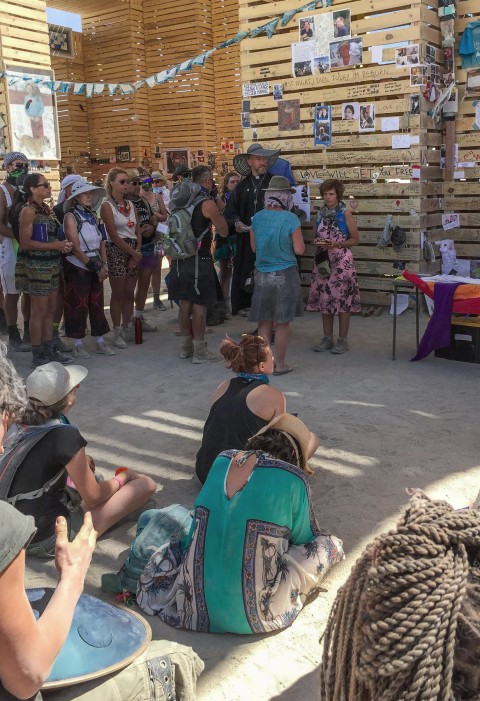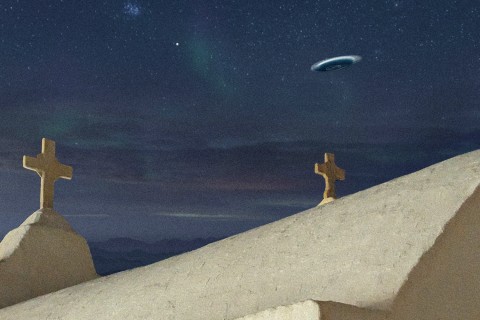
I am wearing a pink dress, hiking shoes, and a hydration pack. My co-leader, John—he’s an Episcopal priest, I’m a Baptist pastor—looks rather more traditional in his clerical collar and black garb, with a straw hat to shade him from the sun. Goggles and a bandana hang around my neck in preparation for the dust storm edging across the playa at Burning Man.
All around us are women and men in various states of dress—adorned in peculiar costumes, pasties, tattoos, leather, and piercings. Before we headed out on our bicycles, I overheard a campmate note that she was dressed as a pilot, complete with aviator goggles and long white scarf. All of us unavoidably wear a layer of dust from head to toe.
We gather together before a temple that will be burned to the ground two days later. Our purpose on this Friday noon is to offer a Christian memorial service with Holy Communion for some of those who brought their grief to Burning Man this year.





